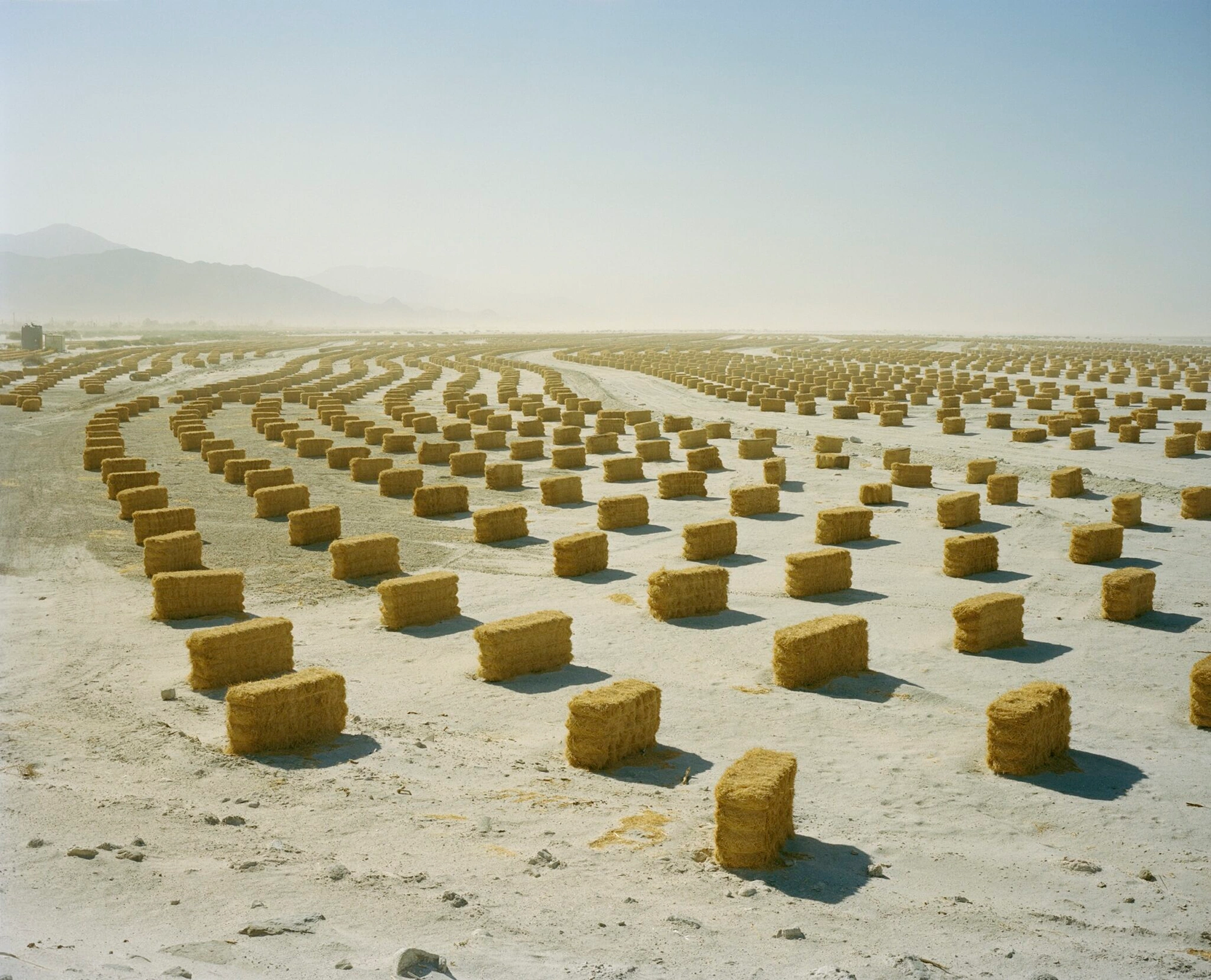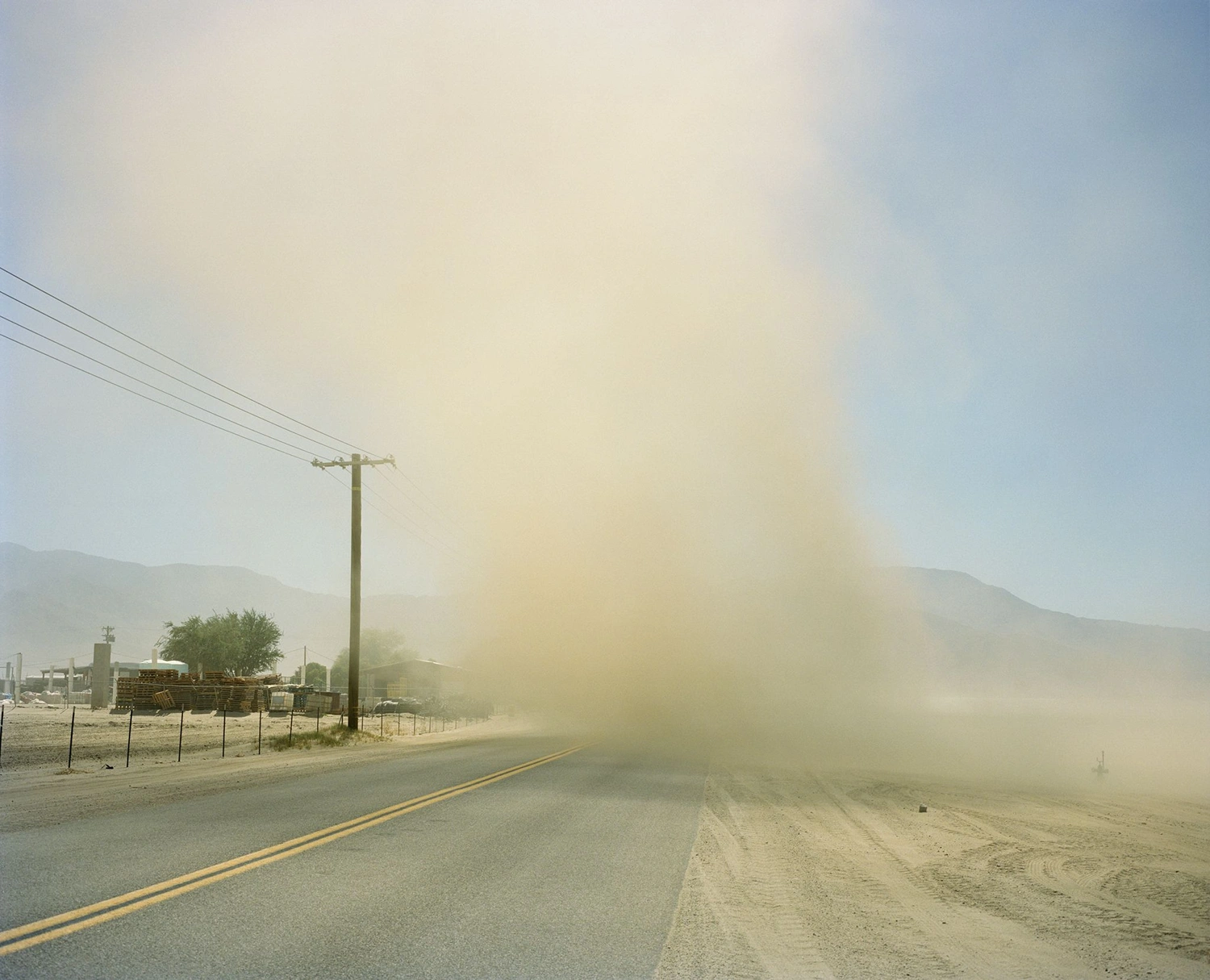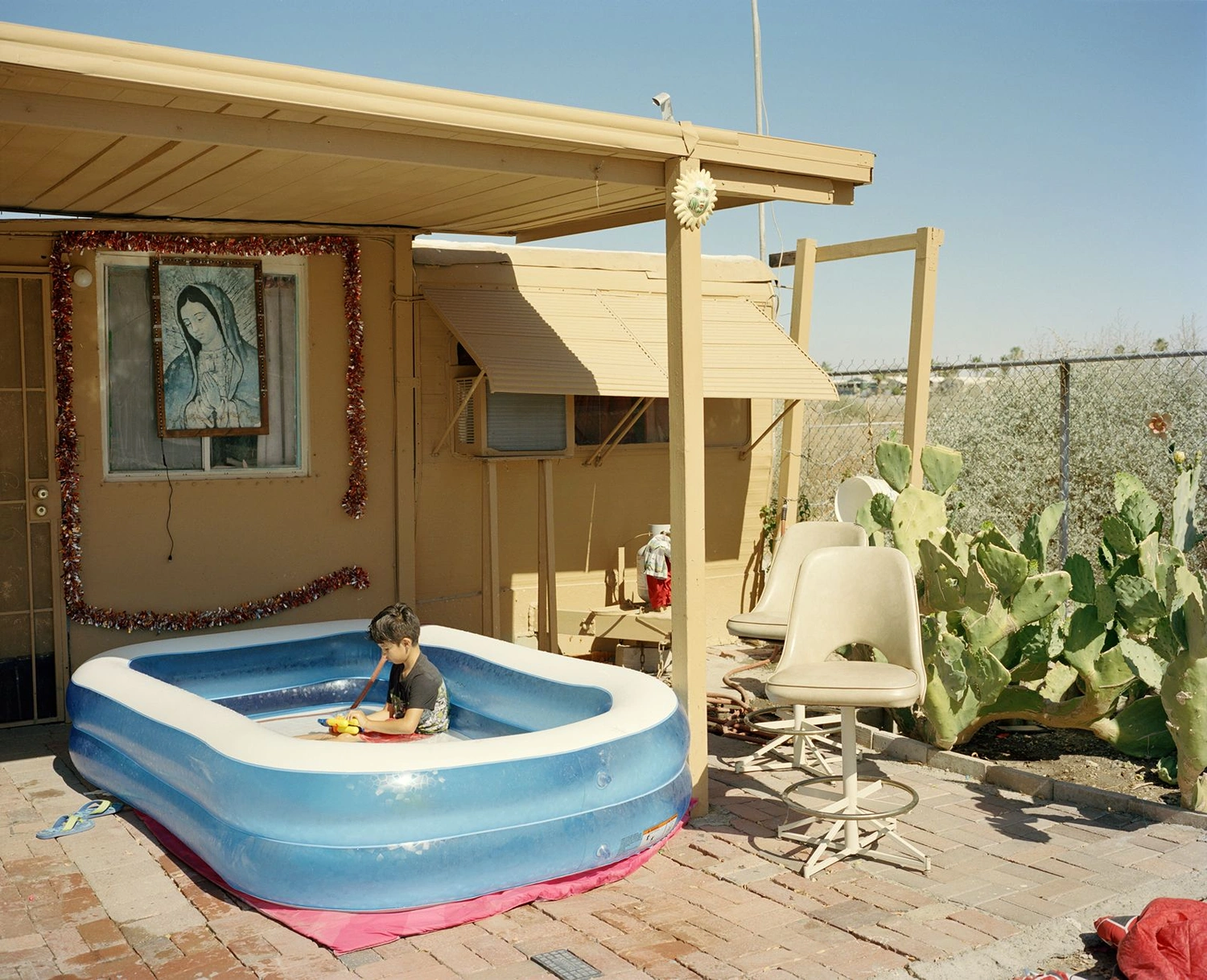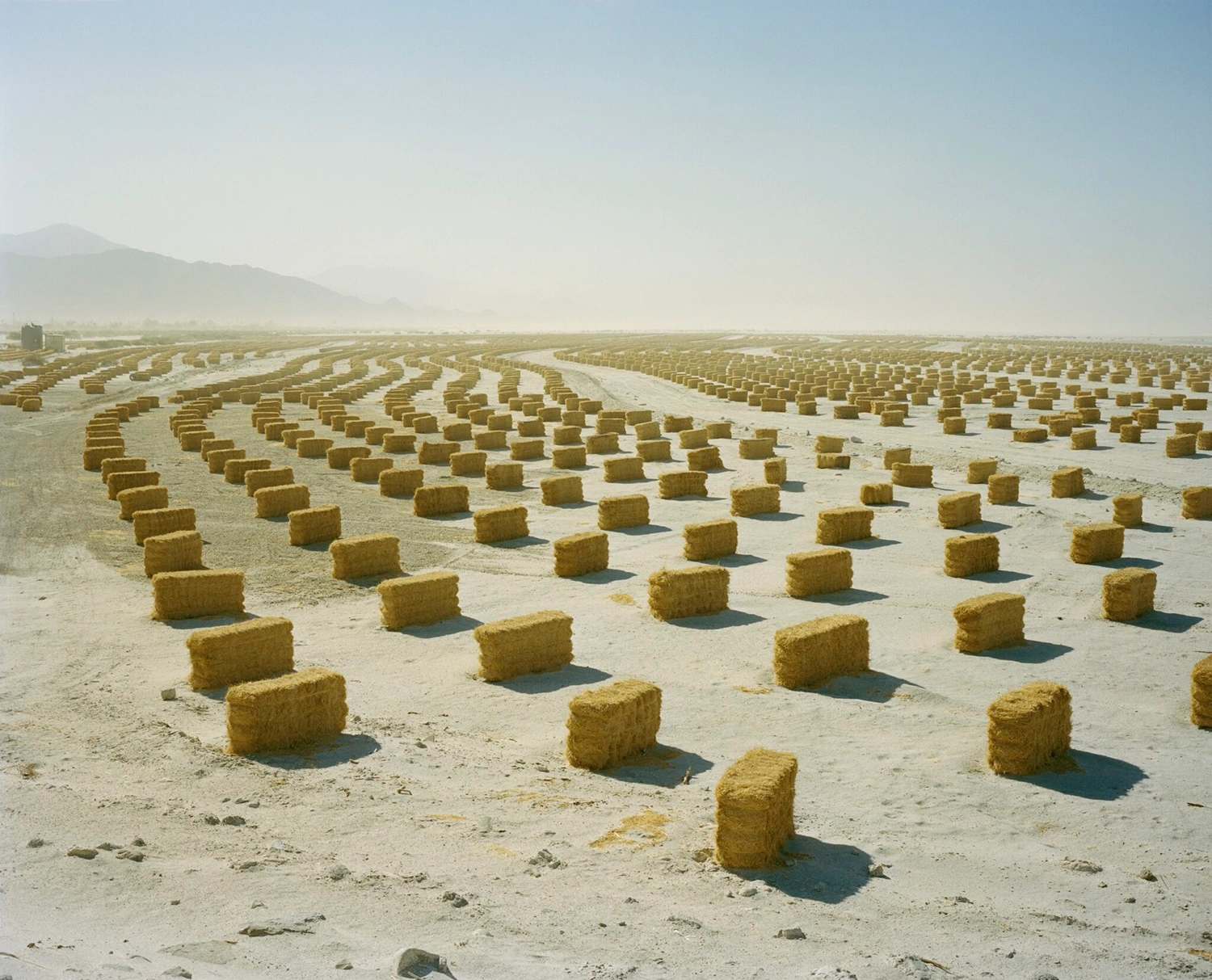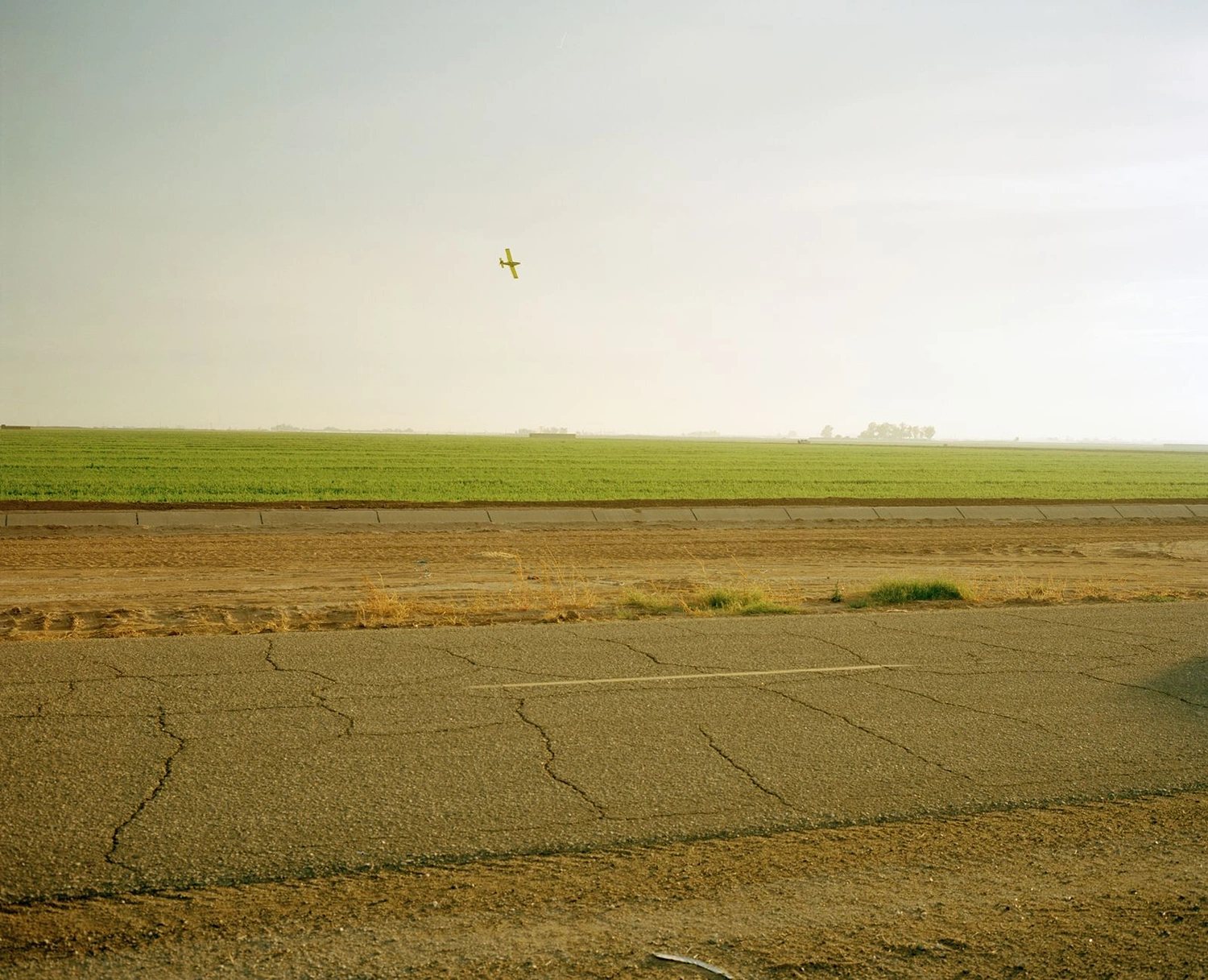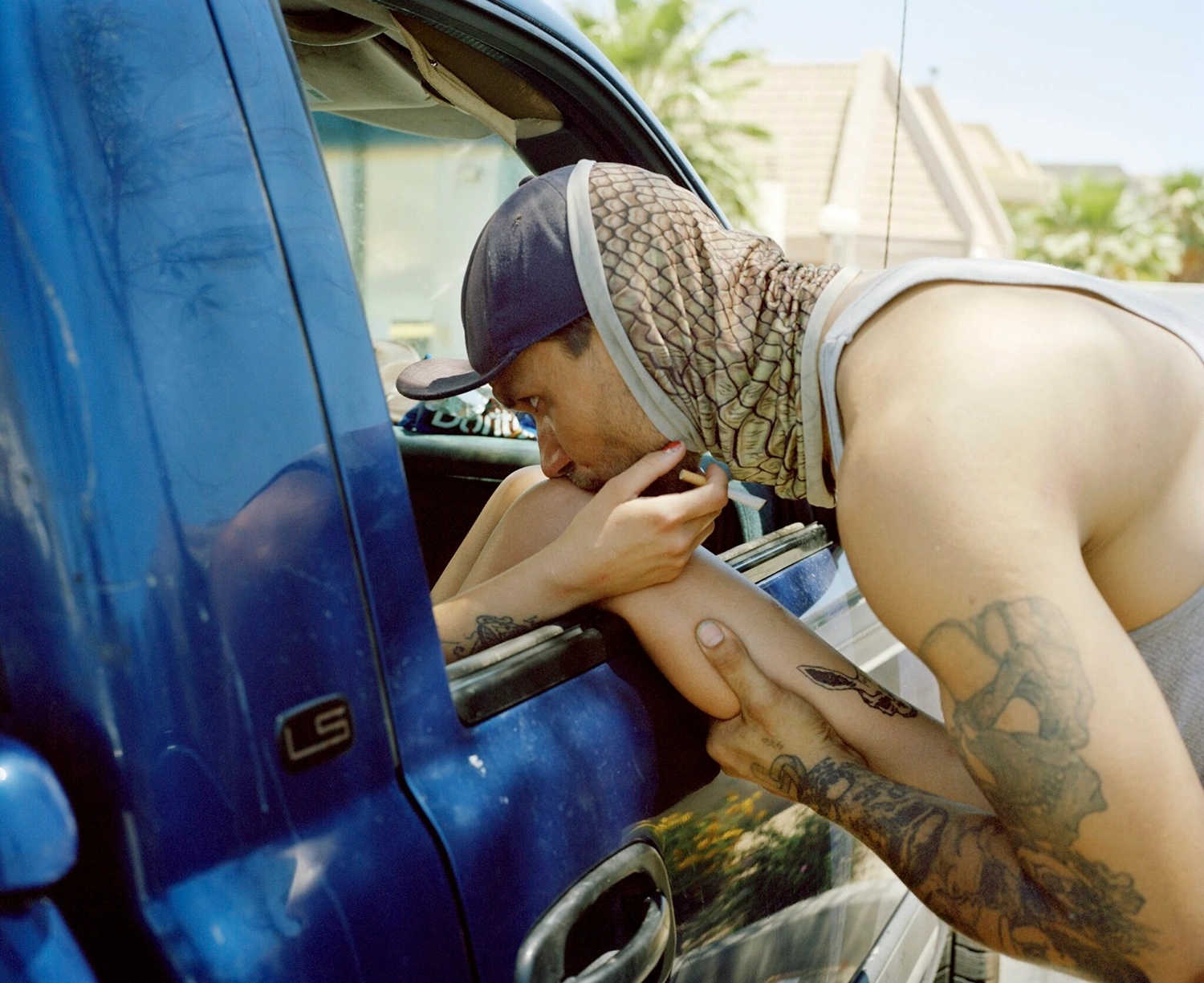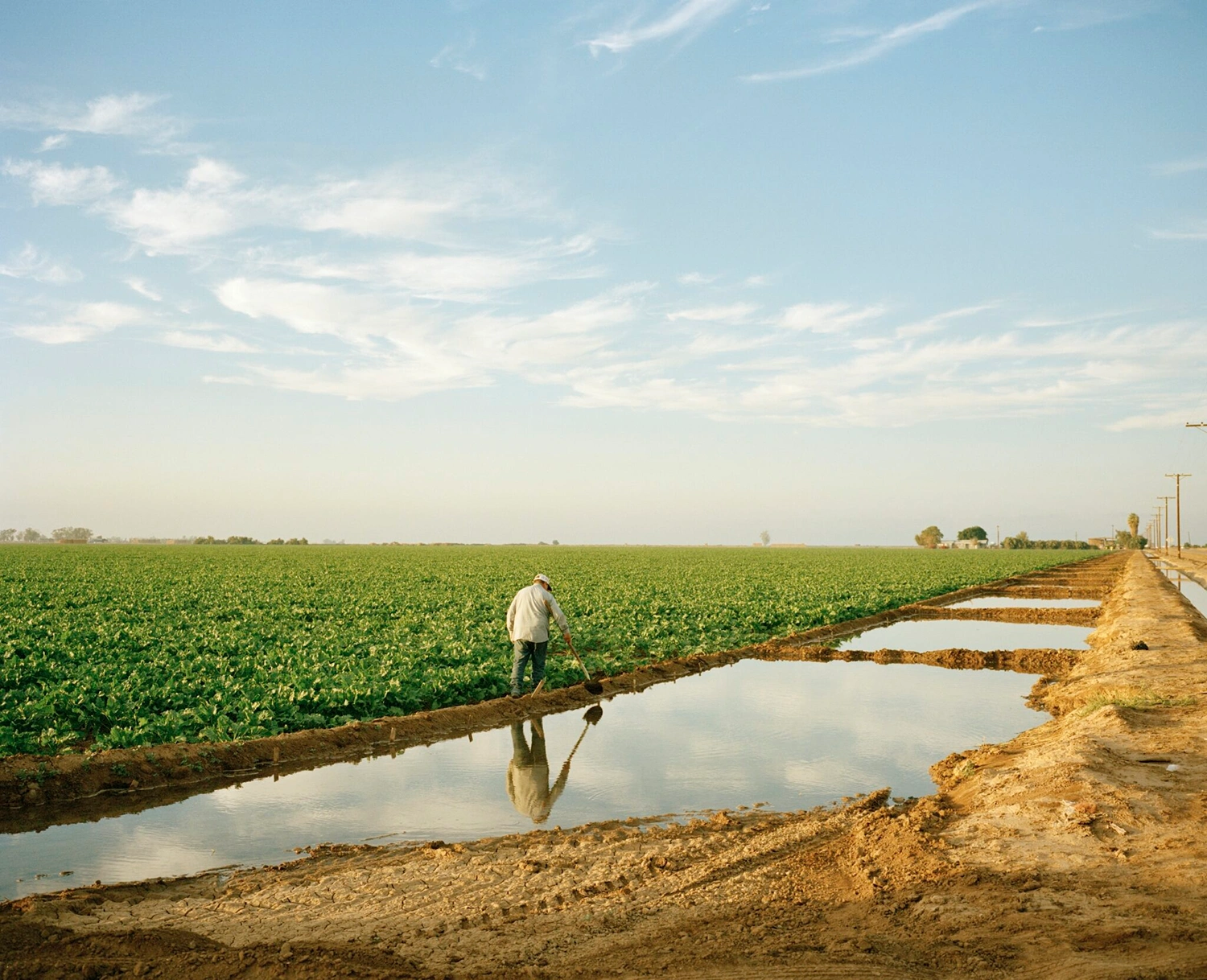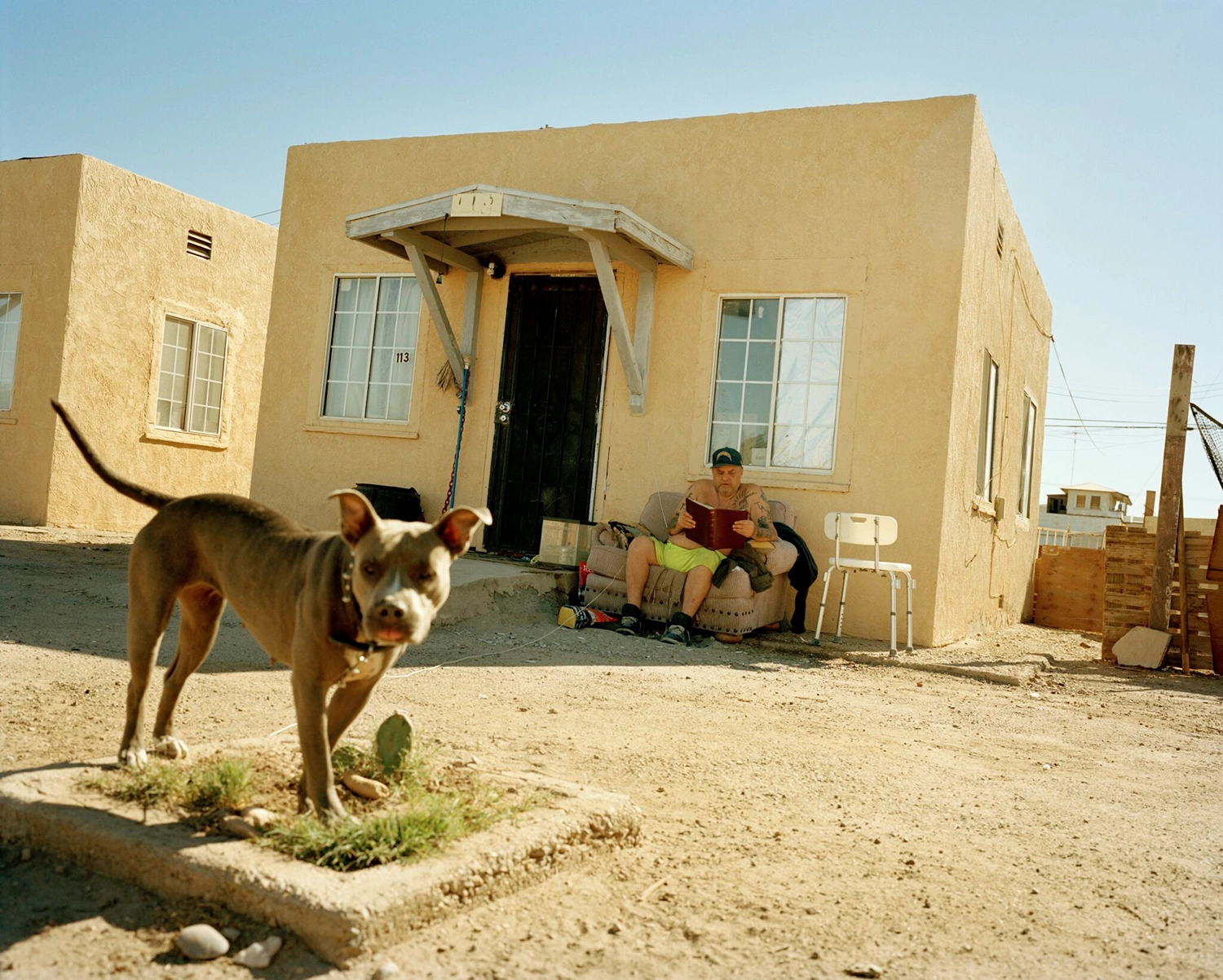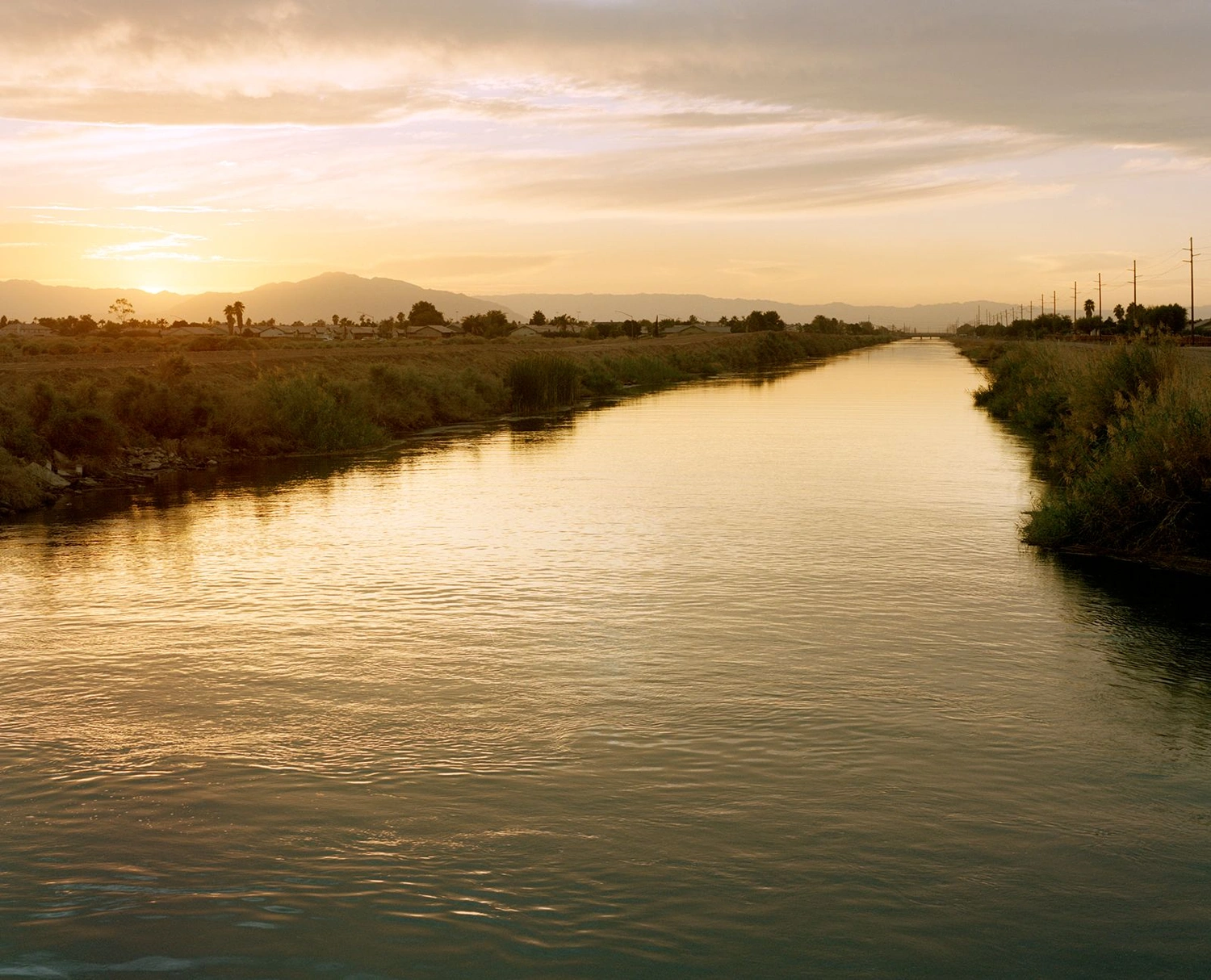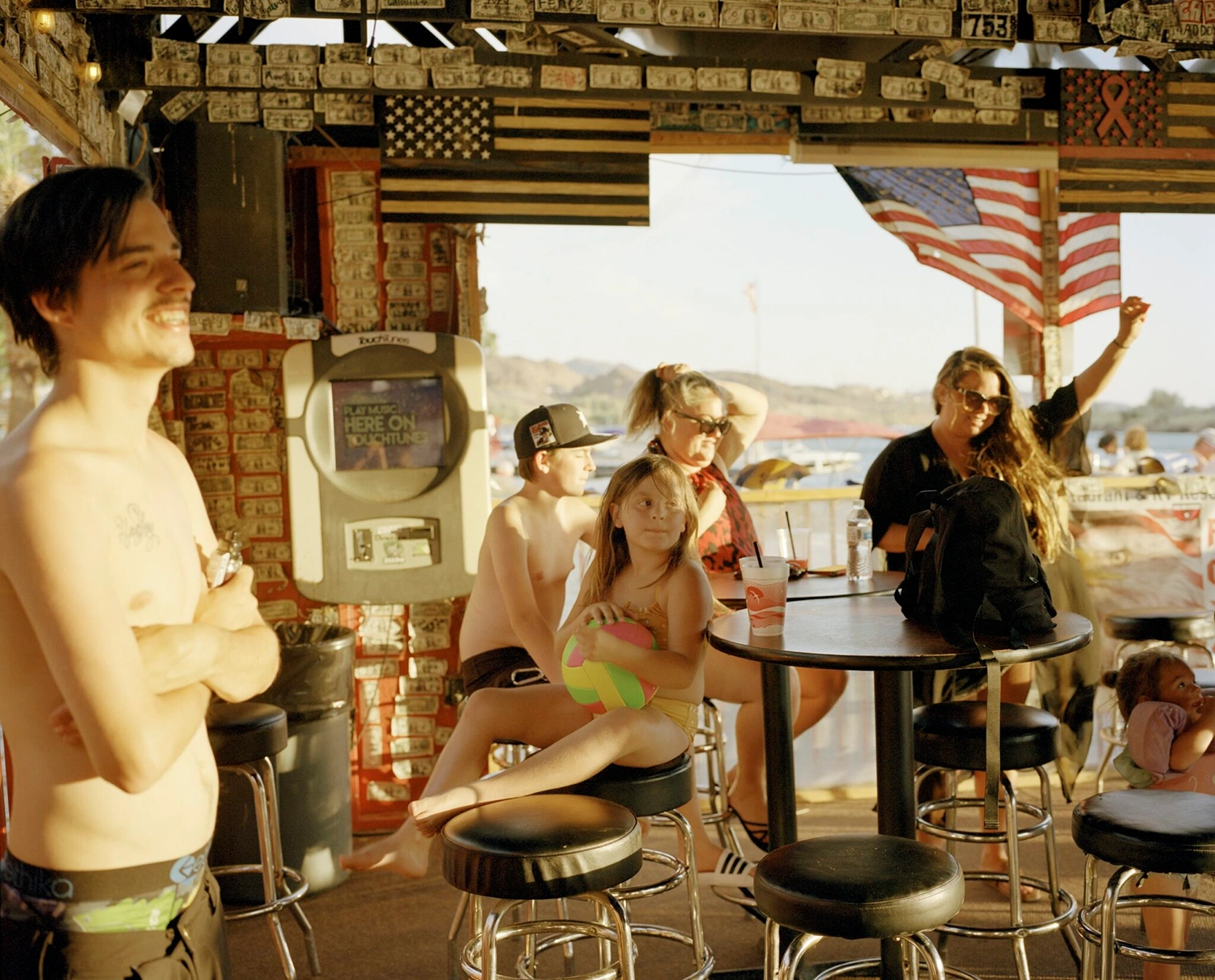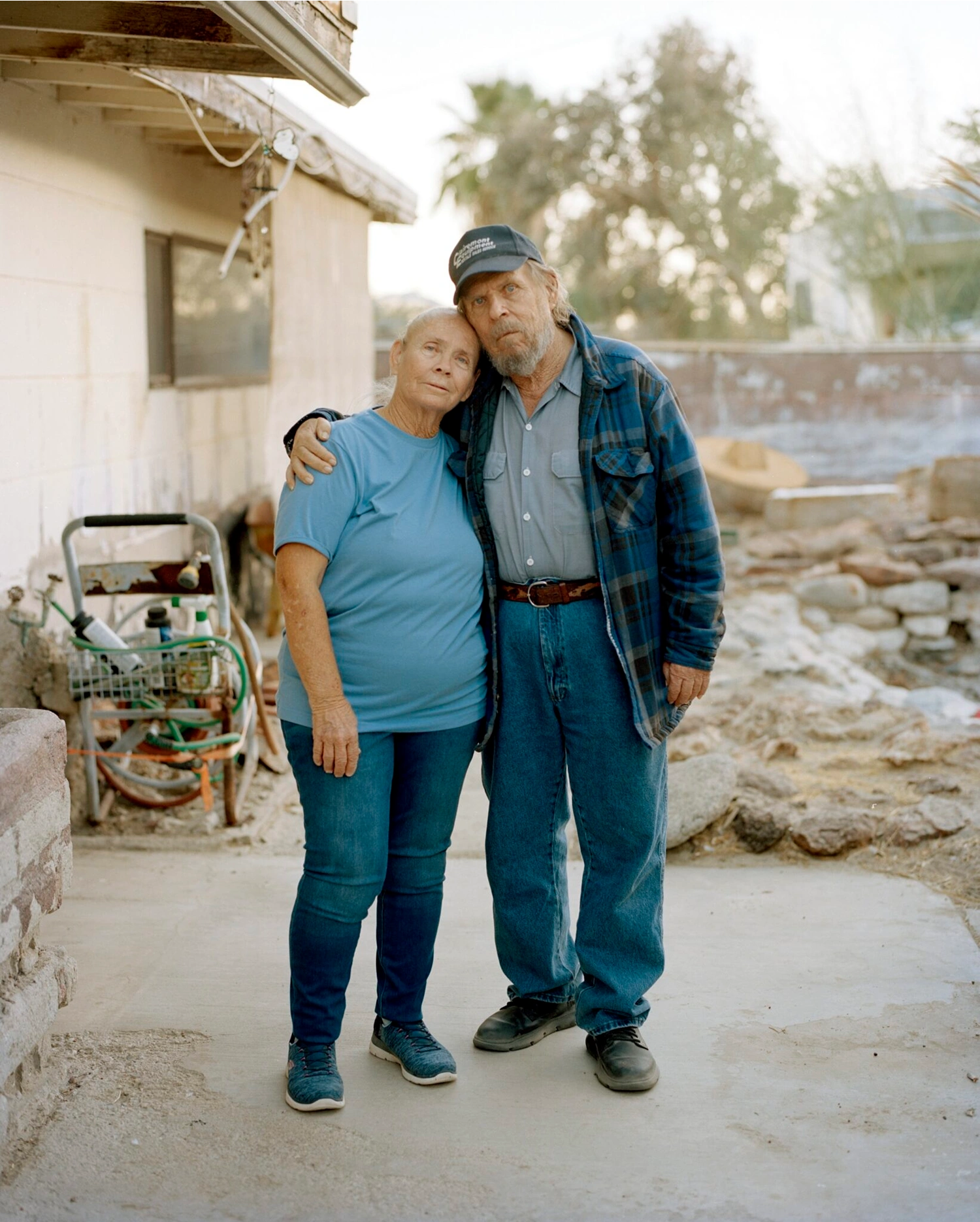Dreams on the Dying Stone by Scott Rossi explores California's Imperial Valley through evocative photographs documenting human vulnerability amid environmental collapse, capturing the stark collision of ambition and reality.
Nearly a century after Dorothea Lange's documentation of the region's destitution during the Great Depression, Rossi revisits Southern California’s sprawling agricultural hub to reveal the stark realities shaped by climate crisis, water scarcity, and human exploitation. This compelling body of work does not merely echo historical documentation but resonates as a powerful exploration of ecological precarity and economic vulnerability.
Rossi's photographs are defined by their nuanced attention to water—both its presence and striking absence. Water, as Rossi aptly describes, has become "like gold." One photograph poignantly illustrates this idea, capturing droplets from a hose used to wash a horse, each droplet illuminated as if precious metal suspended mid-air. Conversely, in his images of the Salton Sea’s toxic shorelines, water’s absence becomes equally vivid, revealing expanses of dust and decay, symbolic of the broader environmental degradation threatening the valley.
The Salton Sea itself serves as an evocative symbol in Rossi’s narrative. Once a bustling resort destination, the sea is now a source of toxic dust storms, with airborne particulates creating hazardous living conditions for surrounding communities. Rossi's palette, muted and warm, underlines this unsettling atmosphere. Images such as the portrait of Doris Dinsmoor, who inhabits a home seemingly eroded by unseen toxic forces, encapsulate the tension between enduring domesticity and the looming ecological crisis.
Human resilience amid harsh realities is a recurring theme in Rossi's work. His depiction of young Alexis playing in a shallow paddling pool beside his dust-covered family trailer starkly contrasts idealized images of childhood innocence. Similarly, Rossi’s photograph of Sydney and Kourtni, living in their car, underscores a pervasive economic vulnerability rooted in agricultural instability. This is further illuminated by Rossi’s image of Raul, one of thousands of day laborers commuting from Mexico, highlighting the transience and precariousness that underpins the region’s economic structure.
Yet Dreams on the Dying Stone is more than documentation; it is an indictment of unsustainable human ambition. Rossi captures how historical fantasies of Western prosperity clash profoundly with environmental and economic realities. In doing so, he continues Lange’s legacy, providing not just pictorial illustration but compelling visual evidence. Through Rossi’s lens, the Imperial Valley becomes both a site of human struggle and a powerful symbol of the larger narrative of climate change and its inexorable reshaping of human lives and landscapes.

